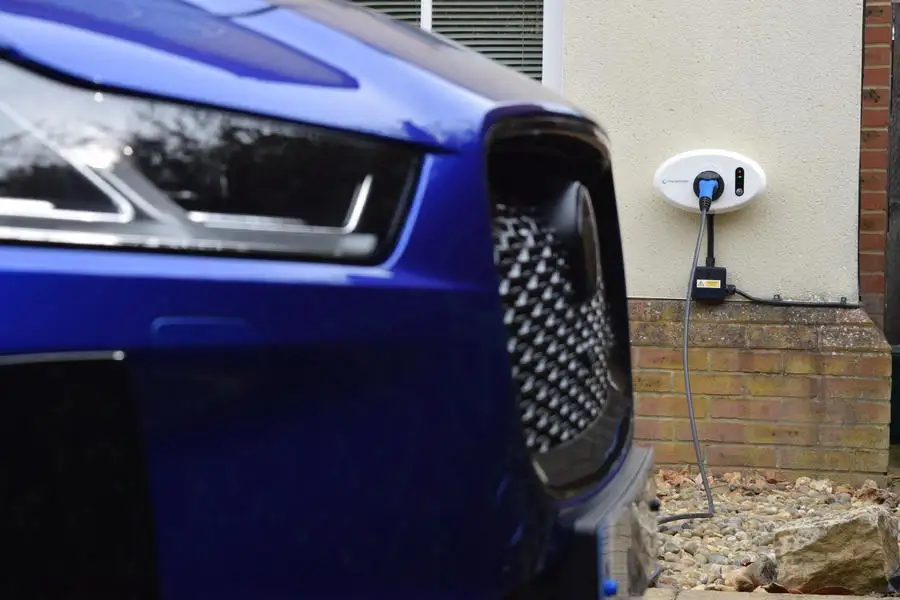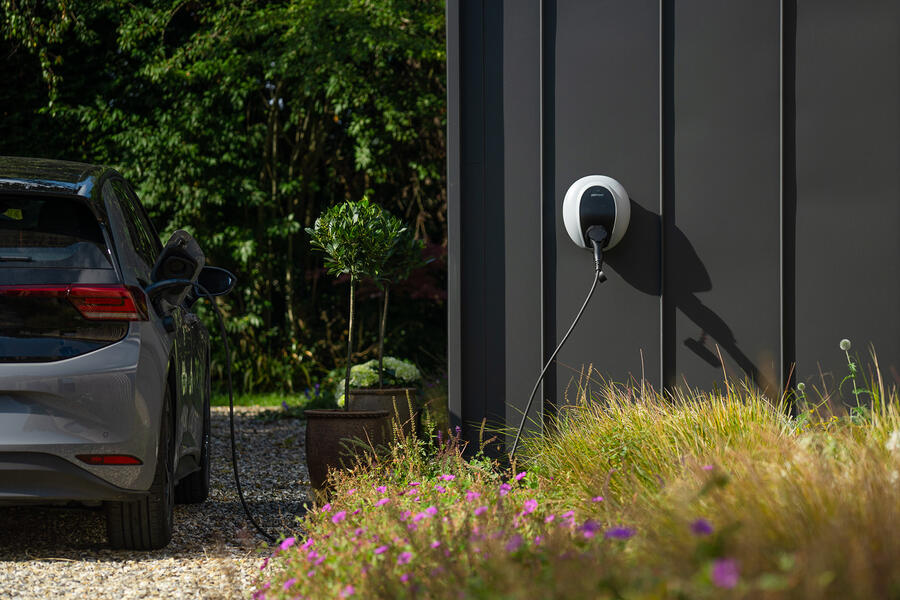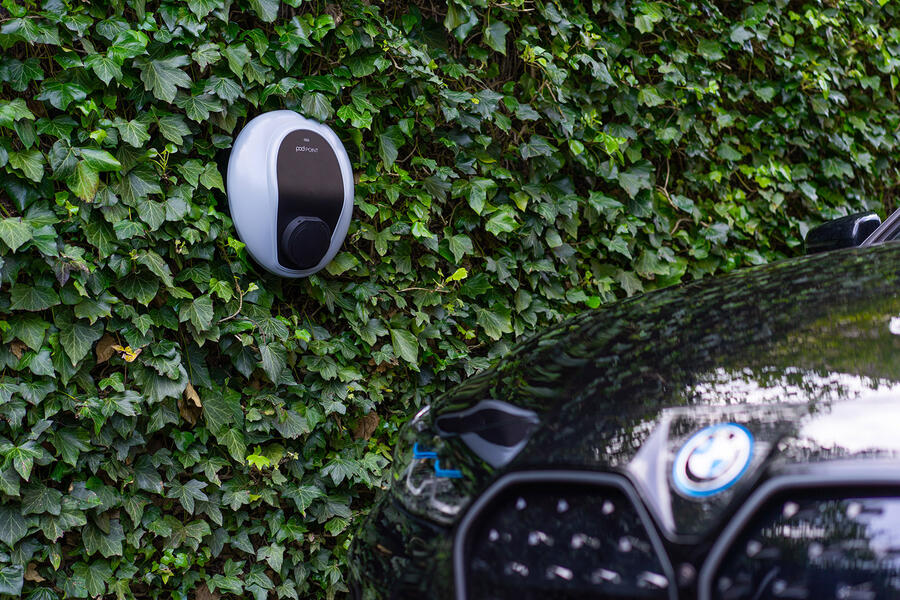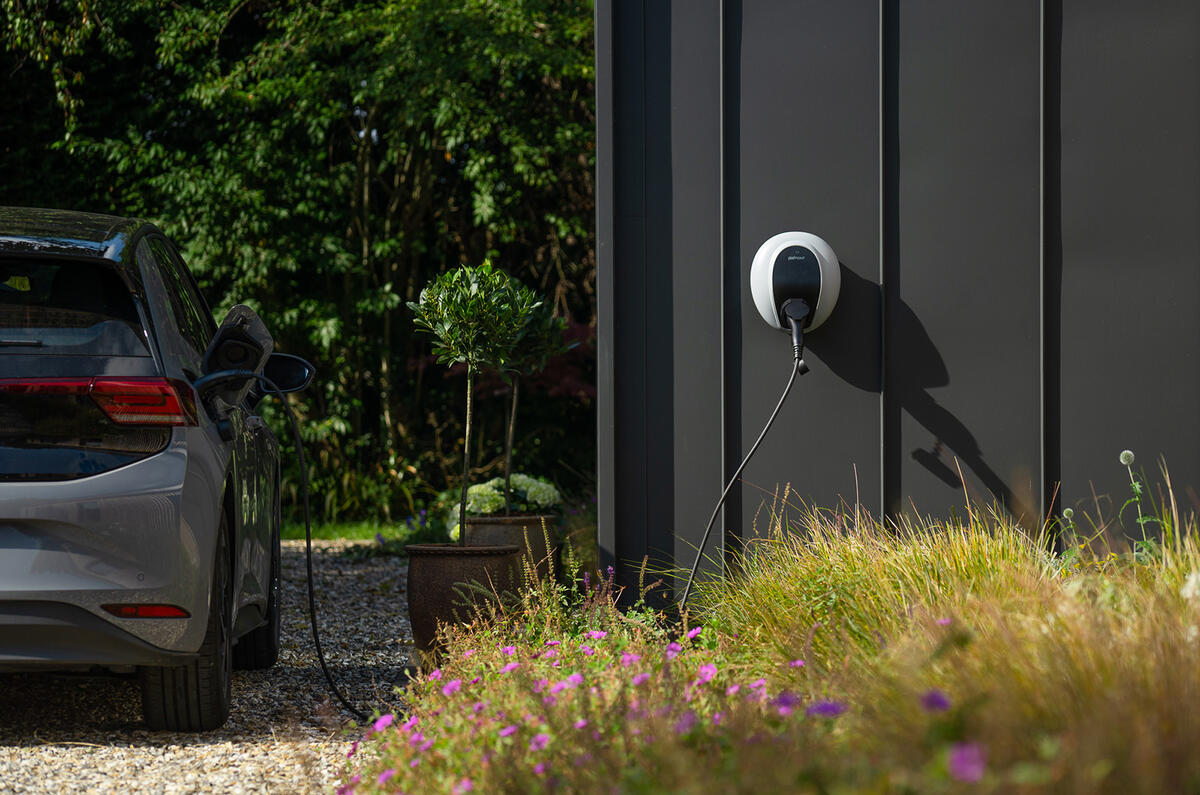Despite the ever-increasing number of electric car chargers installed across the UK, there’s no greater convenience than owning your own at home.
Home charging is easy and convenient, so it's no wonder that, according to the Energy Saving Trust, 80% of EV charging takes place at drivers' homes.
Another appeal of home charging is that it's cheaper than charging anywhere else. Depending on your energy supplier, it may get even cheaper at night, when you don't need your car. You wake up each day effectively with a ‘full tank’ and so are less likely to require a streetside charger on your way to work.
It all sounds straightforward, but there are many things to consider when it comes to charging at home, from picking the right type of charger to making sure you're benefiting from the financial incentives available.
Of course, not everyone can charge from home. Around 60% of drivers in the UK have access to a driveway, a figure that drops to 40% for residents of urban areas. There’s still much work to be done to make home charging accessible for all, particularly those in rented accommodation or flats and apartments.
If you can charge from home or are hoping to in the near future, you might have some questions. We’ve compiled an in-depth guide for home charging right here, so you can move forward with your electric car journey as soon as possible.
How can I charge my car at home?
There are a few common methods that let you charge your electric car at home. For most people, a wallbox is the best solution.
Available from several manufacturers, wallboxes are attached to your house (or a nearby outbuilding) and supply power directly to your car.
They offer charging speeds that are more than three times as fast as a domestic three-pin socket and provide the convenience of mounting the box directly onto the wall of your house or garage.
Cables also don’t need to be run into the house through open doors or windows.

Some do plug their car directly into a three-pin socket, but this solution is very slow, with many car manufacturers limiting the current drawn directly from a socket to just 2.3kW.
This means a car with a typical 64kWh battery, such as the Kia Niro EV, can take more than 24 hours to fully charge. Bigger lithium ion batteries used in models such as the Tesla Model S or Mercedes-Benz EQS can take days.
For these reasons, it's unsurprising that this method is called trickle charging.
What is a wallbox charger?
A wallbox charger is a standalone unit wired directly into your domestic electricity supply. It’s mounted to an external wall of your property and allows you to quickly and easily plug your car in to charge.
You can buy fast-charging units that will reduce the time it takes to replenish the battery, as well as ‘smart’ units that you can programme remotely to charge only at certain times (such as when your electricity tariff is cheapest) and that can condition the battery to increase its lifespan. Other chargers can be linked to solar panels, helping to reduce your bills and carbon footprint.
Most wallboxes deliver 7kW fast charging, which reduces the charging time by about half compared with 3kW units. Almost all electric cars will be able to charge at this rate, which is ideal for home use when most charging is done overnight.
There are also 11kW and 22kW options, but these require a three-phase power supply, which is rare in domestic applications but often found in industrial or business premises.
You can have your home upgraded, but it’s unlikely that the extra cost would justify the quicker charging times. However, if there are multiple EVs in your household, a 22kW charger will be ideal for sharing.

The biggest caveat for home charging is that you need access to a driveway, garage or some other form of off-street parking close to your house, because you musn't stretch a charging cable across roads or footpaths.
Chargers can be either tethered or untethered. A tethered unit features a permanently attached cable with either a Type 1 or Type 2 connector. It's the perfect choice if you have just one EV, because it makes for simple charging: just park up and plug in.
With untethered units, you use the charging cable provided with the car and it plugs into the charger at one end and the EV at the other. This is a more flexible solution, because it allows you to quickly swap between Chademo and CCS cables if, say, you run two different EV models with different connectors, such as a Nissan Leaf and a Peugeot e-208.
How much do home chargers cost?
Prices for home chargers depend on the desired charging speed plus any ‘smart’ features you might be after.
Basic 3kW slow chargers start at around £100, whereas you will need around £300 for a faster, 7kW unit. Smart units that feature wireless control via a smartphone app cost between £450 and £1000.

In general, the cost of fitting is included in the price, but there may be an extra charge if significant changes need to be made to your household wiring.
Keep an eye out for special deals from major car manufacturers. Some offer a free wallbox and fitting when you purchase one of their EVs.
What is a smart charger?
A smart charger is a wallbox that uses wi-fi to connect with various apps on your smartphone. In doing so, it allows you to remotely tailor your car’s charging schedule, giving you the ability to select when charging happens and how much electricity to put into the battery.
As a result, you can make sure you’re only charging when electricity is cheapest or limit the amount of energy in the battery to 80% to avoid overheating the cells, improving their longevity.
Smart chargers cost more to buy than standard units, but bear in mind that the government's OZEV subsidy applies only to this kind of equipment, meaning that if you meet the criteria, they actually work out cheaper to buy.
As to whether you need a smart charger, that’s up to your budget and needs. However, there’s no denying that having one will allow you to make the most of your energy tariff and ensure that your car is always charged and ready when you need it. It costs more to buy, but it shouldn’t take long for you to reap the rewards.
What is the wallbox grant?
To encourage drivers to switch to EVs, the government is offering financial incentives through its Office of Zero Emission Vehicles (OZEV) department.
If you buy a new EV, you will qualify for a grant that pays for 75% of the price and installation cost of a wallbox, up to a maximum of £350. Currently, you can apply for a grant for each EV you own, although this is limited to just two vehicles.
However, as of April 2022, the government changed the eligibility criteria, meaning most homeowners with off-street parking are no longer able to apply for the grant.
Instead, the incentive is now limited to homeowners living in a flat or apartment (provided they also have off-street parking), tenants of rented properties (with the landlord’s permission) and small business owners.
What is vehicle-to-grid (V2G)?
Currently only available to businesses and select retail customers, vehicle-to-grid (V2G) charging effectively integrates an EV with the national grid.
When a number of electric vehicles are connected for long periods at dedicated V2G chargers (such as when parked during the day while their owners are at work or overnight), energy providers can use the combined capacity of the batteries for energy storage or access their electricity for extra power during peak periods. For EV owners and users, there are financial benefits, with the energy provider paying for the electricity it uses.
The next steps are vehicle-to-home (V2H) and vehicle-to-everything (V2X) charging, with your car becoming part of the energy supply to your home or the wider grid.
V2H could prove particularly useful with renewable energy, allowing you to store electricity generated by solar or wind power that would otherwise go to waste, such as during the day, when there’s less need for heating and lighting.
The benefits of V2X are even more far-reaching, albeit some way off yet. Essentially, it would allow you to ‘trade’ energy wherever you park up and plug in. So, for example, you could leave your car at the airport parking and receive a discount on parking if the site uses some of the energy in your car’s battery to balance the grid supply at peak times.
The only downside is that currently only vehicles fitted with the Chademo charging connector are capable of this two-way flow of energy. That effectively means only models from Nissan, such as the Leaf and e-NV200 van.
However, various firms are close to being able to deliver similar technology for the more popular CCS charging system, with British company Indra a leader in this area.







Join the debate
Add your comment
So why do you go on about how trickle charging will take 24 hours to fully charge a battery?
The advantages and disadvantages of electric vehicles are very obvious, suitable for their own needs to choose. With electric vehicles, outdoor public charging piles for charging needs are popular, and household or portable chargers are indispensable. The choice of charger is also very important.
Dear AutiCar, do you know what would be a really useful article for millions of motorists? How someone who doesn't have a house with a driveway can get on with charging an electric car. I'm in Edinburgh, and the average home here is a 2 bedroom flat, which means very little chance to have a wall mounted box. All these sorts of articles, and electric car reviews, focus on being able to charge at home, when a large portion of the driving population do not have this facility.
Also, it could look at which cities (outside of London and the south east) do well with public chargers. Edinburgh is dreadful, with very few.